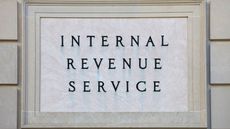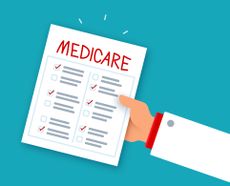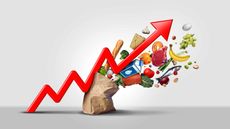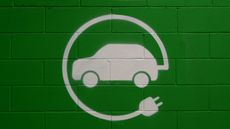Kiplinger’s Interest Rates Outlook: Staying Up Until the Economy Slows
Unexpected strength in the economy will support bond yields until more evidence of slowing appears.
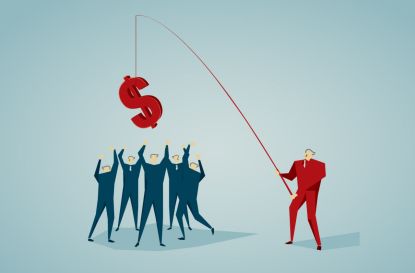
Kiplinger's Economic Outlooks are written by the staff of our weekly Kiplinger Letter and are unavailable elsewhere. Click here for a free issue of The Kiplinger Letter or for more information.
The strong jobs report for May is boosting bond yields as the economy starts to look better, with a recession possibly further off than expected. While we still expect that the economy will slow in the coming months, for now, look for yields to stay elevated until signs of that slowdown arrive. The May jobs report showed that the services and government sectors are still hiring strongly, while pockets of the goods-producing sector – specifically motor vehicles, aircraft and nonresidential construction – are still going strong.
A deal to raise the federal debt ceiling has been ratified by Congress, meaning that a major worry for bondholders has been removed until 2025 when the deal expires.

Sign up for Kiplinger’s Free E-Newsletters
Profit and prosper with the best of expert advice on investing, taxes, retirement, personal finance and more - straight to your e-mail.
Profit and prosper with the best of expert advice - straight to your e-mail.
The Federal Reserve is likely to hold off on raising short-term rates at its June 14 policy meeting. Tighter bank lending conditions have created their own rate-hike effect, which Chair Powell acknowledged in a speech this month. Powell added that the risks of doing too much to fight inflation are becoming more balanced with the risks of not doing enough. This is a shift in tone from previous statements that focused only on the Fed’s commitment to bringing down inflation.
Other short-term interest rates have risen along with the federal funds rate. Rates on home equity lines of credit are typically connected to the fed funds rate and move in lock-step with it. Rates on short-term consumer loans such as auto loans have also been affected. Rates to finance new vehicles are around 7% on six-year auto loans for buyers with good credit.
Mortgage rates will stay elevated until there is more progress in the inflation fight. 30-year fixed-rate loans are at 6.5%, after peaking at 7.1% in early November, while 15-year fixed-rate loans are around 5.9%. Mortgage rates react to changes in the 10-year Treasury yield, though they are still about a full percentage point higher in relation to the 10-year Treasury than would normally be expected. Mortgage rates tend to stay higher for longer when inflation is high, whereas Treasury rates tend to be more sensitive to signs of economic slowing.
The debt ceiling deal helped corporate high-yield bond rates to ease. AAA bonds are now yielding 4.5%. BBB bonds are at 5.7%, while CCC-rated bond yields are at 14.6%.
David is both staff economist and reporter for The Kiplinger Letter, overseeing Kiplinger forecasts for the U.S. and world economies. Previously, he was senior principal economist in the Center for Forecasting and Modeling at IHS/GlobalInsight, and an economist in the Chief Economist's Office of the U.S. Department of Commerce. David has co-written weekly reports on economic conditions since 1992, and has forecasted GDP and its components since 1995, beating the Blue Chip Indicators forecasts two-thirds of the time. David is a Certified Business Economist as recognized by the National Association for Business Economics. He has two master's degrees and is ABD in economics from the University of North Carolina at Chapel Hill.
-
-
 IRS is Targeting Promoters of Abusive Tax Schemes Kiplinger Tax Letter
IRS is Targeting Promoters of Abusive Tax Schemes Kiplinger Tax LetterTax Letter Tax schemes range from basic tax dodges to highly complex transactions.
By Joy Taylor • Published
-
 How to Save on Prescription Medication
How to Save on Prescription MedicationHow you can save money on prescription medication amidst rising prices.
By Erin Bendig • Published
-
 Need a Loan or Credit? It May Get Harder for Businesses and Individuals: Kiplinger Economic Forecasts
Need a Loan or Credit? It May Get Harder for Businesses and Individuals: Kiplinger Economic ForecastsEconomic Forecasts Getting a loan or credit may get harder for businesses and individuals: Kiplinger Economic Forecasts
By Rodrigo Sermeño • Published
-
 Car Makers Look To Cut the Cost of Recalls: Kiplinger Economic Forecasts
Car Makers Look To Cut the Cost of Recalls: Kiplinger Economic ForecastsKiplinger Economic Forecasts Faulty software costs car manufacturers $500m in recalls. What are they turning to and what could that mean for you?
By Letter Editors • Published
-
 Deeper Regional Banking Crisis Unlikely after Triple Failure: Kiplinger Economic Forecasts
Deeper Regional Banking Crisis Unlikely after Triple Failure: Kiplinger Economic ForecastsEconomic Forecasts Deeper Regional Banking Crisis Unlikely after Triple Failure: Kiplinger Economic Forecasts
By Rodrigo Sermeño • Last updated
-
 Travel Demand and Delays to Soar, So Plan Ahead: Kiplinger Economic Forecasts
Travel Demand and Delays to Soar, So Plan Ahead: Kiplinger Economic ForecastsEconomic Forecasts Travel Demand and Delays to Soar, So Plan Ahead: Kiplinger Economic Forecasts
By Sean Lengell • Last updated
-
 Medicare Drug Price Negotiations Latest: Kiplinger Economic Forecasts
Medicare Drug Price Negotiations Latest: Kiplinger Economic ForecastsEconomic Forecasts Medicare drug price negotiations: Early signs have emerged of how these key talks will be handled.
By Matthew Housiaux • Published
-
 Food Prices Fell in March But Are Still Way Up Year-on-Year: Kiplinger Economic Forecasts
Food Prices Fell in March But Are Still Way Up Year-on-Year: Kiplinger Economic ForecastsEconomic Forecasts Food Prices Fell in March But Are Still Way Up Year-on-Year: Kiplinger Economic Forecasts
By Matthew Housiaux • Published
-
 The EV Revolution: Kiplinger Economic Forecasts
The EV Revolution: Kiplinger Economic ForecastsEconomic Forecasts Kiplinger keeps you abreast of the latest developments in the auto sector
By Jim Patterson • Published
-
 AI Regulation is Looming: Kiplinger Economic Forecasts
AI Regulation is Looming: Kiplinger Economic ForecastsEconomic Forecasts Find out what Washington and regulators have planned for artificial intelligence.
By John Miley • Published
